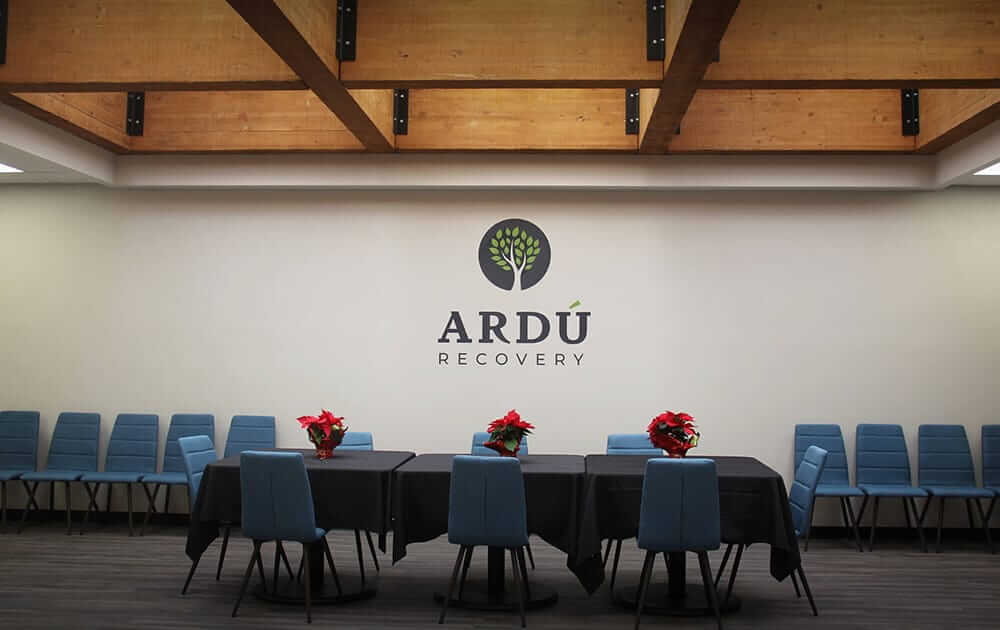Written by Drew Redd. Mina Draskovic, B.Psy., reviewed this content for accuracy.
Tramadol addiction is a serious condition that can severely impact your life. At Ardu Recovery Center, we offer hope and healing through our tramadol rehab and detox programs. Our comprehensive approach includes medical detox, personalized therapy, and long-term support to guide you toward lasting recovery.
Tramadol is a synthetic opioid medication prescribed to treat moderate to severe pain. It works by binding to opioid receptors in the brain and inhibiting serotonin and norepinephrine reuptake. This makes it effective for both acute and chronic pain conditions but also poses risks of dependence.
In certain circumstances, addiction to tramadol can be life-threatening. While tramadol is considered to have a lower potential for abuse compared to traditional opioids such as morphine or oxycodone, it still carries significant risks.
While tramadol addiction may not be immediately life-threatening for everyone, it carries serious risks that can escalate to life-threatening situations.
Tramadol addiction can manifest through physical symptoms and behavioral changes. These changes negatively impact the user’s health and daily functioning.
Physical indicators of tramadol dependence include:
Behavioral and psychological signs to watch for may include:
If you’re concerned about potential tramadol misuse in someone close to you, seek professional help from addiction treatment centers or mental health services. Ardu Recovery Center will guide you through your rehab journey to overcome your dependence on tramadol.
Ardu Recovery Center offers a transformative path for those who seek treatment for tramadol addiction. We understand that taking this step is challenging, but we’re here to support you every step of the way. Here’s why Ardu stands out:
We believe in your ability to overcome tramadol addiction and build a healthier, happier future. We’re here to provide the support, tools, and compassionate care you need to make that future a reality.
The first step in your journey to a tramadol-free life is detox.
Our tramadol detox program ensures your safety and comfort as you begin your path to recovery. Our experienced medical team provides round-the-clock care, developing a personalized treatment plan to address your unique needs.
To ease the challenging withdrawal process, we offer:
Our holistic detox services combine traditional medical interventions with alternative therapies, including:
This comprehensive approach helps stabilize your body and mind, preparing you for the next phase of treatment. Following detox, you’ll transition into our addiction treatment program, where you’ll engage in evidence-based therapies to build a strong foundation for long-term recovery.
Once you’ve successfully completed the detox process, our tramadol addiction treatment center awaits. We offer comprehensive care for tramadol addiction tailored to your unique needs. Our multifaceted approach to rehabilitation includes:
To best serve your needs, we offer a range of treatment modalities that allow us to provide the right level of support at every stage of your recovery journey.
We believe in a continuum of care that adapts to your progress in recovery. Our goal is to provide you with the tools, support, and guidance needed to overcome tramadol addiction and build a fulfilling, substance-free life. Whether you require the structure of inpatient care or the flexibility of outpatient services, we’re here to support you every step of the way on your journey to lasting recovery.
Contact Ardu and take the first step towards reclaiming your life from tramadol addiction.
“Every detail matters to the people who built and run Ardu Recovery Center. Their goal is to provide a healing environment where clients can find peace, hope, medical help, therapeutic guidance, personal strength, and lasting recovery from addiction. The facility is a state-of-the-art wonder…”
We will help you identify and overcome the underlying issues that contribute to your tramadol addiction while equipping you with the tools and strategies necessary to maintain your sobriety long after you leave our facility.
With the right support and guidance, you can break free from the grip of addiction and start living the healthy, fulfilling life you deserve. Schedule a tour to learn more about our tramadol addiction treatment program and take the first step toward a brighter future.

Drew Redd is the executive director of Ardu Recovery Center and is dedicated to empowering people on their journey to sobriety.








Daily tramadol use may lead to physical dependence and tolerance. Over time, you may need higher doses to achieve the same pain relief, potentially leading to adverse effects and an increased risk of overdose.
Long-term use can also cause psychological dependence and negatively impact your quality of life. Common side effects of addiction to tramadol include constipation, nausea, and drowsiness. There’s also a risk of developing serotonin syndrome, especially if combined with other medications. Daily use may affect liver and kidney function, particularly in those with pre-existing conditions.
Generally, tramadol is prescribed for short-term use, typically 3–7 days for acute pain. For chronic conditions, extended use may be necessary but requires close monitoring. Your doctor will decide how long you should take tramadol based on your health background, the severity of your pain, and your personal risk factors.
Prolonged use increases the risk of physical dependence and the potential for misuse. Your doctor will regularly evaluate the benefits versus risks of continued use. If long-term use is required, your healthcare provider may consider alternative pain management strategies or rotate between different medications to minimize tolerance and dependence.
Doctors are cautious about prescribing tramadol because of its potential for misuse and addiction. As an opioid analgesic, it carries risks of physical dependence and developing substance use disorder.
Some other reasons why doctors refrain from prescribing tramadol include:
Given these factors and the ongoing opioid crisis, many doctors prefer safer alternatives or non-pharmacological approaches for pain management when possible.
50mg of tramadol is considered a standard starting dose for adults with moderate pain. Whether it’s “a lot” depends on your individual pain severity, medical history, opioid tolerance, and history of substance abuse. For opioid-naive patients, 50mg can be a significant dose and may have negative consequences such as dizziness or nausea.
The maximum recommended daily dose is usually 400mg, but many patients find effective pain relief at lower doses. Factors such as age, weight, liver, and kidney function can affect how the body processes tramadol. The goal is to find the lowest effective dose to manage pain while minimizing risks of adverse effects and dependence.
Substitutes for tramadol depend on the specific condition being treated and individual patient factors.
In some cases, a combination of treatments yields the best results.
It’s possible to build up a tolerance to tramadol with regular use. Tolerance occurs when the body adapts to the presence of the drug, requiring higher doses to achieve the same pain-relieving effects. This process can happen relatively quickly, even within a few weeks of consistent use.
As tolerance develops, there’s an increased risk of physical dependence and potential for misuse. Patients may find themselves needing to take larger doses or more frequent doses to manage their pain effectively. This escalation can lead to a higher risk of adverse effects and complications.
Taking 200 mg of tramadol at once is not recommended unless specifically prescribed by your healthcare provider. The typical maximum single dose is 100 mg, with a daily maximum of 400 mg for most adults. Taking 200 mg at once significantly increases the risk of seizures, including respiratory depression, adverse effects, and serotonin syndrome. It also raises the potential for overdose, especially in opioid-naive individuals or those with certain medical conditions.
Such a high dose could lead to severe side effects such as extreme drowsiness, confusion, or even loss of consciousness. If you’re finding your current dosage ineffective, consult your doctor rather than adjusting the dose yourself.
Tramadol can impact both the kidneys and liver, especially with long-term use or in high doses. The liver is responsible for metabolizing tramadol, and prolonged use may stress this organ, particularly in individuals with pre-existing liver conditions. The kidneys play a crucial role in eliminating tramadol from the body, and impaired kidney function can lead to the accumulation of the drug, increasing the risk of side effects.
When used as prescribed in individuals with normal liver and kidney function, tramadol is considered safe for the kidneys and liver.
What are the symptoms of alcohol withdrawal?
What are the most damaging drugs to your body?
What is post-acute withdrawal syndrome?
Why are prescription drugs addictive?
Is quitting multiple addictions at once doable?
What are the most common detox symptoms?